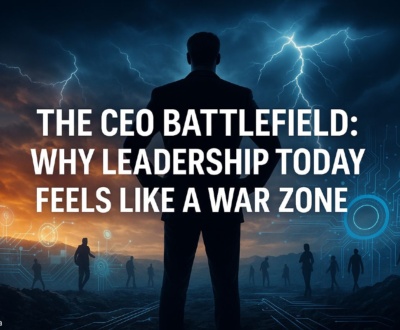Followers vs Non‑Followers: Why Your “Tribe” Isn’t Always Your True Win
- November 9, 2025
- social media

For years, social media success was defined by one simple metric: follower count. Grow the tribe. Build the brand. Gain loyalty. Repeat. But as the digital landscape evolves — algorithms grow smarter, audiences more discerning, content more abundant — this old game is changing. Today, more wins are coming from non‑followers than the ones who hit “follow” right away.
1. Why follower count still feels important
It’s easy to see why: a large number of followers signals credibility. Platforms reward accounts with size, brands feel safer when they see thousands of fans. But research shows that follower size doesn’t necessarily equal influence or engagement. One 2025 study found that follower size often functions as a “symbolic” resource rather than a direct predictor of credibility or content performance.
And while an account with millions of followers can reach many people, it doesn’t always guarantee the right reach or engagement.
2. The algorithm shift: reach beyond your followers
One of the biggest shifts in social content strategy: your posts don’t only get shown to your followers anymore. In fact, non‑followers increasingly factor into the reach equation. For example, one analytics source highlights average organic reach rates like 1.65% on Facebook and ~3.5% on Instagram — meaning even large follower counts still get shown to small portions of that audience.
In short: you can have 10,000 followers and only 100 actually see your post — while a non‑follower, someone who isn’t “in your tribe,” might see and engage with it because the algorithm finds them a match.
3. The psychology of “cult response” and why it hurts
Here’s a scenario: many followers engage out of loyalty — they like your posts, comment, “support” you — but they don’t really care about your content in a meaningful way. We sometimes call this a “cult response” — people feel obliged, maybe out of fear of alienation, to show up. But their engagement is superficial.
When most of your followers are in this zone, you might actually be limiting your real reach. Because the algorithm learns: “these people aren’t spending time here,” and shows your content less broadly.
Contrast that with non‑followers: they have no obligation to behave a certain way. If they engage, it’s because your content resonated. That signals freshness, relevance, authenticity. That signals virality.
4. Research‑backed insights
- A 2023 study of millennial Facebook brand followers found that passive participants and active lurkers still significantly contribute to brand evangelism — meaning not all followers need to be vocal or visible to matter.
- A 2025 study found that while larger follower sizes correlated with more source diversity (for influencers), they did not predict higher credibility‑assessment rigor.
- As one marketing commentary notes: “The modern social media landscape is no longer a popularity contest.”
Together these insights underline: it’s not solely about followers — it’s about engagement, relevance, ripple effect.
5. Real‑world evidence: Non‑followers driving outcomes
Consider this real‑life scenario: a social post reaches 230,000 people. Of those, only 2% are followers of the page; 98% are non‑followers. That’s a huge paradigm shift. It says that while the follower base is your “home crowd,” the outside crowd — those you haven’t yet won — are where true growth happens.
The ancient wisdom rings true: “A prophet is not without honor, except in his own country.” Sometimes your own base overlooks the message you’re shouting — but strangers don’t yet know your story and will give you a chance.
6. What this means for your strategy
- Don’t obsess solely over follower growth. It’s nice, but it’s not the endgame.
- Focus on content that resonates beyond your followers. Experiment with formats, topics, shareability, storytelling.
- Open your audience. Don’t create a closed loop of supporters who feel obligated. Aim for content that invites new eyes, discussions, shares.
- Measure what matters. Reach, unique viewers, time spent, shares, comments from non‑followers — not just follower count.
- Build bridges. Make room for non‑followers to become first‑time engagers, then loyalists — but don’t expect loyalty to come automatically.
7. Leading with openness and authenticity
When you isolate — build an echo‑chamber of your loyal followers only — you inadvertently limit yourself. You cut off the fresh perspectives, the new opportunities, the “outsider” audience that might become a loyal advocate.
Instead, consider this: open yourself up to non‑followers, with discretion. Welcome them. Surprise them. Let them engage. Then maybe turn them into followers — but only if they genuinely care, not because they feel they “should.”
Because at the end of the day: followers are nice, but non‑followers are often your biggest win.
Final takeaway
The old PR mantra of “build the tribe, grow the followers” still has value — but not as the only value. In 2025, success lies in the unpredictable, the outsider, the non‑follower who becomes first a viewer, then a share, then a loyal voice.
At G Social Media, we help brands not only nurture their follower base — but break out of it. We build strategies that invite non‑followers in, broaden reach, and cultivate actual engagement. Because the real growth isn’t in the crowd you already have — it’s in the crowd you’ve yet to win.
Open the door. Let strangers walk in. They might just stay.
About us and this blog
We are a digital marketing company with a focus on helping our customers achieve great results across several key areas.
Request a free quote
We offer professional SEO services that help websites increase their organic search score drastically in order to compete for the highest rankings even when it comes to highly competitive keywords.
Subscribe to our newsletter!
More from our blog
See all postsRecent Posts
- Followers vs Non‑Followers: Why Your “Tribe” Isn’t Always Your True Win November 9, 2025
- PR in 2025: Public Relations in a Post-Spin World November 7, 2025
- The CEO Battlefield: Why Leadership Today Feels Like a War Zone November 6, 2025










